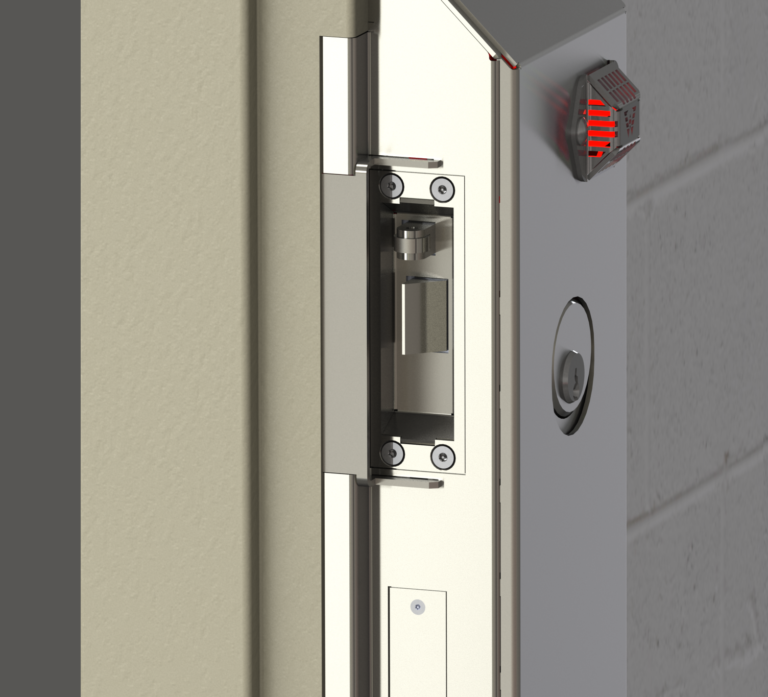California Report: Budget Woes Affect Corrections
On January 10, Governor Brown released his 2011-12 state budget proposal. California is projected to face a budget gap of $25.4 billion in 2011-12. This gap is made up of a current-year shortfall of $8.2 billion and a budget-year shortfall of $17.2 billion. The Budget includes $26.4 billion in spending cuts, revenues and other solutions to balance the budget this year and into the future, and to provide for a reserve.
gap is made up of a current-year shortfall of $8.2 billion and a budget-year shortfall of $17.2 billion. The Budget includes $26.4 billion in spending cuts, revenues and other solutions to balance the budget this year and into the future, and to provide for a reserve.
 gap is made up of a current-year shortfall of $8.2 billion and a budget-year shortfall of $17.2 billion. The Budget includes $26.4 billion in spending cuts, revenues and other solutions to balance the budget this year and into the future, and to provide for a reserve.
gap is made up of a current-year shortfall of $8.2 billion and a budget-year shortfall of $17.2 billion. The Budget includes $26.4 billion in spending cuts, revenues and other solutions to balance the budget this year and into the future, and to provide for a reserve.Subject to voter approval, the Governor’s budget proposes to maintain the level of current tax rates and the dependent exemption credit for five years. These taxes include: the Personal Income Tax (PIT) rate quarter-percent surcharge, the PIT dependent exemption credit at the same level as the personal exemption credit, the Vehicle License Fee (VLF) rate at 1.15 percent, and the Sales and Use Tax (SUT) rate at 6 percent.
The budget proposes a major shift in the state-local relationship by realigning a number of programs to counties and cities, it is anticipated that this proposal will need voter approval in a June special election. If fully implemented, this proposal will restructure how and where more than $10 billion in a wide range of services are delivered. The first phase of this proposal will be a $5.9 billion transfer of programs from the state to the counties funded by maintaining the 1-percent sales tax and the 0.50-percent Vehicle License Fee that are currently set to expire in 2011 (which includes the local public safety portion of the VLF).
Done correctly and fully funded, the public safety restructuring plan may be workable and could create new opportunities for local public safety and their partners. There are still a number of details that remain largely undefined as conversations continue among the Administration, Legislature and stakeholders to mitigate negative impacts and create opportunities where possible. Below is a summary of the realignment and related proposals that could have an impact on the corrections field.
Public Safety Realignment
There are several proposals to transfer a number of services currently provided by the state to local governments that could impact the corrections field. Phase One Realignment programs and funding for fiscal year 2011‑12 (full implementation proposed in fiscal year 2014‑15) fall largely in the public safety category. (A detailed chart of the proposed realignment funding can be viewed on page 20 of the budget document: http://www.ebudget.ca.gov/pdf/BudgetSummary/FullBudgetSummary.pdf).
Phase one of realignment assumes two funding sources for implementation. First, it relies on maintaining current tax rates for five years — $5.9 billion of revenue from the continuation of the 1.15-percent rate for the VLF, which generates almost $1.4 billion, and the extension of the 1 percent in sales tax, which generates slightly over $4.5 billion. This revenue will be deposited in the Local Revenue Fund 2011 and dedicated to local government for the realignment of services, primarily in the public safety area, from the state to counties. Local government will also retain the growth in these revenues to augment the programs being transferred. When these taxes expire after five years, the state will provide counties an amount equal to what these two sources will generate.
The second portion of funding, for specified mental health programs, is the use of existing Mental Health Services Act (Proposition 63) funds, rather than General Fund, for three existing mental health programs resulting in General Fund savings of $861 million. This assumes that the current $558 million maintenance-of-effort and non-supplantation requirements of Proposition 63 would be amended through a vote of the Legislature, which can do so by a two-thirds vote as long as the amendments are consistent with and further the intent of the Initiative. The Administration believes that the continuation of these services at the local level with dedicated funding, along with the minimization of overhead at the state level, is consistent with the requirements of Proposition 63. The General Fund maintenance-of-effort requirement would be replaced with dedicated revenue generated by this proposal.
The timing for approval of this proposal is crucial and assumes a June special election. The Governor is proposing that the people determine whether current tax rates should be maintained for five years to fund critical, core services at the local level. It is anticipated that the Legislature will approve the programs to be realigned and the underlying funding structure by March.
The following programs are recommended for realignment:
Vehicle License Fee Public Safety Programs: The proposal would extend the entire 0.5 percent (0.15 percent of which go currently to the LPSA) VLF for realigned programs for 5 years upon voter approval on the ballot this June. These programs include:
-$107.1 million for the Citizens Option for Public Safety (COPS) program
-$107.1 million for the Juvenile Justice Crime Prevention program
-$35 million for Jail Booking Fee Subventions (this is full funding and would eliminate ability for counties to charge)
-$181.3 million to support juvenile probation efforts at the county level
-$18.5 million for the Small/Rural Sheriffs program
-$57.4 million would also be provided for a variety of program grants currently funded within the California Emergency Management Agency
-$57.4 million would also be provided for a variety of program grants currently funded within the California Emergency Management Agency
Court Security: This proposal would transfer the funding of court security directly to counties. This would allow courts and Sheriffs to come to local agreements regarding the costs of court security.
Local Jurisdiction for Lower‑Level Offenders and Parole Violators: Under this proposal, offenders without any current or prior serious or violent or sex convictions would become the responsibility of local jurisdictions. The Administration projects that this would be in the neighborhood of 37,000 offenders. It is contemplated that a combination of local jail time and probation services would be utilized in lieu of state prison. Of that 37,000 about 6,500 are parole violators. This translates into $298.4 million in 2011-12 growing to $908.1 million at full implementation in 2014-15.
Realign Adult Parole to the Counties: This proposal would shift the responsibility for adult parole to the counties for supervision, specifically probation. This contemplates $113.4 million in 2011-12 growing to $409.9 million in 2014-15.
Realign Remaining Juvenile Justice Programs: This proposal would close all DJJ facilities by June 30, 2014 and end the state’s role in housing and treating youthful offenders who would now all serve their sentences locally.
California Department of Corrections and Rehabilitation
The Governor’s Budget proposes $9.1 billion General Fund and 61,927 positions for state operations and local assistance programs in 2011-12.
The elimination of DJJ and the transfer of programs to the local level will mean the eventual elimination of over 4,000 line positions within CDCR. While Corrections headquarters will still have a corrections system to administer, it will be a smaller system and there is projected to be substantial reductions in headquarters administrative staffing. Ultimately this will translate to hundreds of positions.
A decrease of $485.8 million is proposed in 2011-12 to implement a change in mission for the state’s prison system. The savings amount includes a one‑time reduction of $150 million for rehabilitative programs. Funding for rehabilitative programs would be restored in 2012-13, after CDCR has reconfigured its program delivery model in accord with its changed population mix.
Budget includes an ongoing augmentation of $395.2 million within the CDCR’s budget to correct previous budget shortfalls and more accurately reflect the operational costs within the adult institutions’ budgets. This budget adjustment will also allow the adult institutions to operate a minimal level of “swing space beds” — empty beds necessary to allow for the continuous population movements that take place between CDCR institutions and between the counties and local jails.
State Criminal Alien Assistance Program: The state is expected to receive only $88.1 million in SCAAP funding for 2010-11 and 2011-12. At this level of funding, the state will be reimbursed for only 9.4 percent of the costs associated with the incarceration and related debt service associated with the undocumented felon population, with $850.5 million in costs in excess of the level of federal reimbursements.
Judicial Branch
The significant General Fund reductions are as follows:
Reduction to the Courts: The Budget proposes a permanent decrease of $200 million beginning in 2011‑12 for the courts. The Administration intends to work with stakeholders and the Judicial Branch to identify ways to implement this reduction in a manner that is least harmful to the courts and preserves service levels provided to the public.
Repeal Trial Courts Conservatorship Program: The Budget proposes a permanent decrease of $17.4 million beginning in 2011‑12 to reflect the elimination of statutory requirements to implement the Omnibus Court Conservatorship and Guardianship Act of 2006. This proposed change would relieve the courts of the mandated responsibilities under the Act, but would still allow for individual courts that have been implementing parts of the Act to continue doing so.
A significant amount of work is needed to develop the details of these proposals, particularly the funding mechanisms and structure of dollars provided to local governments under this proposal. This work will continue over the coming months in budget hearings, meetings and through stakeholder involvement. It is too early to know whether the funding would be approved on the June ballot and whether these components have significant traction to hold, but they do start a conversation about the delivery of services and how best to structure state-local responsibilities.






